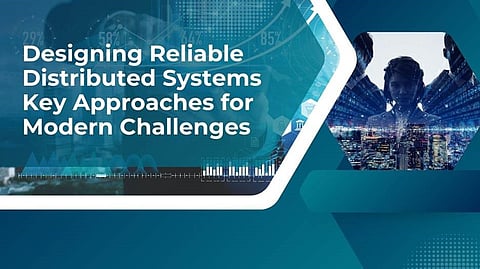

In an era where digital systems are the lifeblood of global industries, Prudhvi Chandra provides valuable insights into the architecture of reliable distributed systems. His article focuses on the principles and practices that ensure high availability, seamless operations, and robust fault tolerance across modern distributed networks.
Distributed systems are central to the infrastructure of many critical services, from e-commerce to telecommunications. With the increasing scale and complexity of these systems, maintaining reliability has become a significant challenge. In fact, studies show that system downtime in these environments can result in losses up to $2.8 billion annually, as seen in distributed energy management systems. Even small latency increases can cause cascading effects across interconnected services, making reliability a non-negotiable feature for modern distributed architectures.
The importance of balancing system components like redundancy, partition tolerance, and graceful degradation cannot be overstated. These principles ensure that distributed systems remain resilient and capable of recovering from failures. By implementing proper redundancy and replication strategies, systems can achieve near-continuous availability, even when faced with hardware failures or network issues. This flexibility allows organizations to scale without sacrificing performance or security.
Modern distributed systems must scale to handle increasing loads. Horizontal and vertical scaling capabilities are essential, with systems frequently managing high transaction volumes. Systems must also be designed to scale across multiple geographic regions to handle large-scale data and ensure high availability. Successful implementation ensures that performance is not compromised under heavy traffic, thus maximizing uptime and operational efficiency. Adaptive systems capable of meeting changing needs are key to future-proofing distributed environments.
One of the most critical challenges in distributed system design is addressing the trade-offs between consistency, availability, and partition tolerance, as outlined by the CAP theorem. While many systems must choose between these elements, modern designs are increasingly capable of balancing these trade-offs dynamically based on specific operational requirements. This flexibility allows systems to adapt according to different failure scenarios, ensuring the most critical aspects of system operation are always maintained.
Graceful degradation is another vital component of reliability-driven design. It ensures that when part of the system faces issues, the overall service continues to operate at reduced capacity rather than failing completely. This approach significantly reduces downtime, ensuring that critical operations remain functional even during outages or performance issues. Graceful degradation prevents complete service failure, giving organizations a chance to maintain core business functions until full recovery is possible.
Microservices and event-driven architectures are paths down which architectural patterns might walk to scale and be reliable. Microservices can be independently scaled and new deployed faster with the failure exposure being reduced. Event-driven architectures, on the other hand, excel when it comes to processing high-volume events. It gives an improved condition of flexibility in scalability. They keep the system very agile, adaptive, and willing to meet modern application demands. Modular microservices add to the isolation of faults and efficient troubleshooting.
This article is about the application of CAP theorem in real-world distributed systems designs. The latest implementations of partition tolerance features are proving that when it comes down to partition events lasting less than 150ms, systems could shift from one option to the other-the former great assumptions made in the field. In terms of consistency and availability, stressing those contexts-of-increasing importance against which systems would have to be resilient-made for a whole new level in case of capability to optimize both for availability and consistency during temporary network failures of system design.
The article considers the economics of reliable distributed systems. Though the cost on developing and maintaining these systems goes higher as here redundancy and fault tolerance are mandatory, such investments pay off a lot on a long-term scale. Now, since the reliability enables loss of revenue due to downtimes and enhances customer satisfaction because incident-related costs can cut down a large proportion of costs to their country of origin by 73%, understanding the ROI in these systems assures that efficient resource allocation takes place between operation and cost constraints.
In conclusion, Prudhvi Chandra's assessment of the reliability-driven architectural design brings vital revelation on new challenges and their consequent solutions that are continually evolving in distributed systems. As organizations ramp up the scale of their digital operations, the next frontier is designing resilient systems through prudent engineering, redundancy, and partition tolerance strategies. The practices described in this article will help organizations design systems that will withstand the rigors of yet unknown future challenges, producing systems that will go beyond the adaptable-resilient-sustainable architecture. In addition, these principles will act as the ground for future-proofing systems to thrive in a world of ever increasing interconnectivity.
